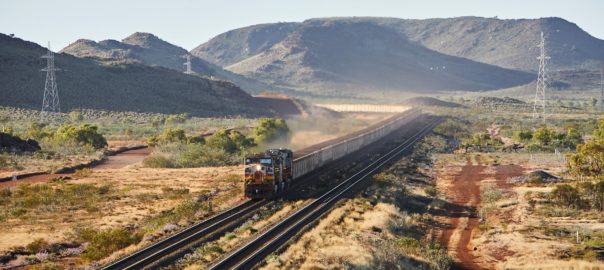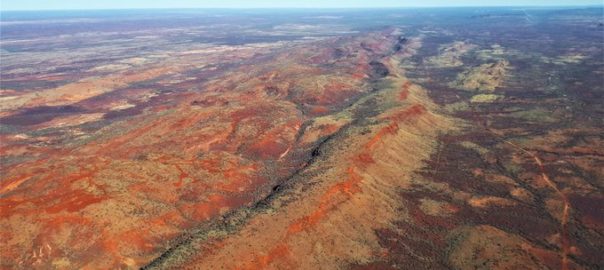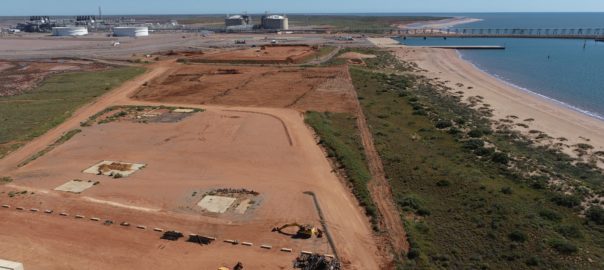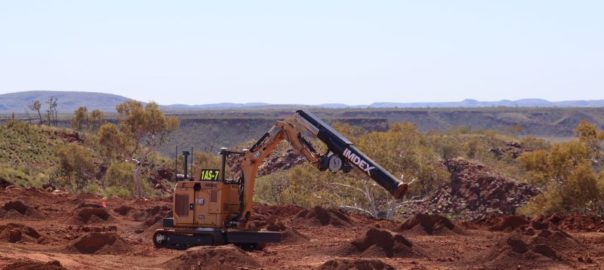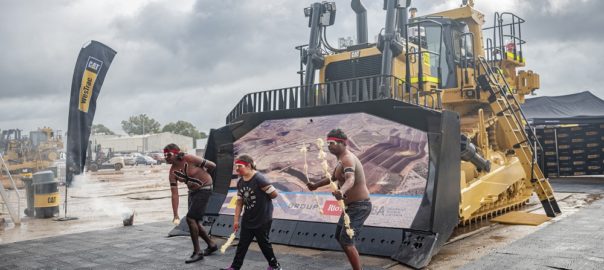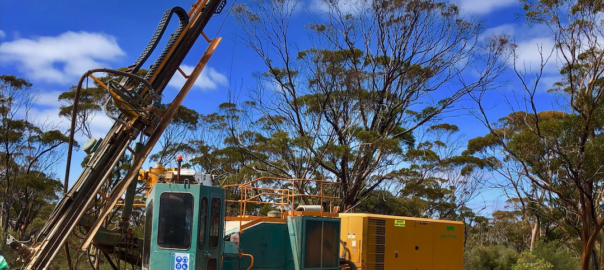Rio Tinto (50%) and Wright Prospecting Pty Ltd (50%) have agreed to modernise the joint venture covering the Rhodes Ridge project in the East Pilbara of Western Australia, providing a pathway for the development of the deposits using Rio’s rail (pictured), port and power infrastructure.
The binding joint venture updates an existing agreement between the two parties dating back to 1972.
The participants have commenced an Order of Magnitude study, conducted by Rio, which will consider the development of an operation before the end of the decade with initial plant capacity of up to 40 Mt/y, subject to the receipt of relevant approvals.
Rhodes Ridge contains 5,800 Mt of high grade mineral resources at an average grade of 62.3% Fe. The project’s total resource, 6,700 Mt at an average grade of 61.6% Fe, represents approximately one-third of Rio Tinto’s existing resource base in the Pilbara. A resource drilling program is currently underway to support future project studies.
Rio Tinto Iron Ore Chief Executive, Simon Trott, said: “Rhodes Ridge contains one of the biggest and best undeveloped iron ore deposits on the planet with proximate access to existing infrastructure. We are very excited we have been able to strengthen our relationship with Wright Prospecting and have a pathway to bring this high quality resource to market.
“With its significant resource base, the Rhodes Ridge project has the potential to underpin production of the Pilbara Blend in the decades ahead.”
He added: “We are committed to working closely with the Traditional Owners, the Nyiyaparli and Ngarlawangga People, to ensure sites of significant cultural, environmental and biodiversity value are protected as part of any future development at Rhodes Ridge. Consistent with our revised approach for new operations, a co-management approach to any future mining activity will be developed in partnership with Traditional Owners.”
A spokesperson for Wright Prospecting, said: “We are delighted to have reached this important milestone for the Rhodes Ridge project. We look forward to partnering with Rio Tinto to develop this asset with a world-leading focus on climate, biodiversity and heritage.”
The joint venture intends to use Rio Tinto’s existing rail, port and power infrastructure, including the planned installment of 1 GW of renewable power assets in the Pilbara.







